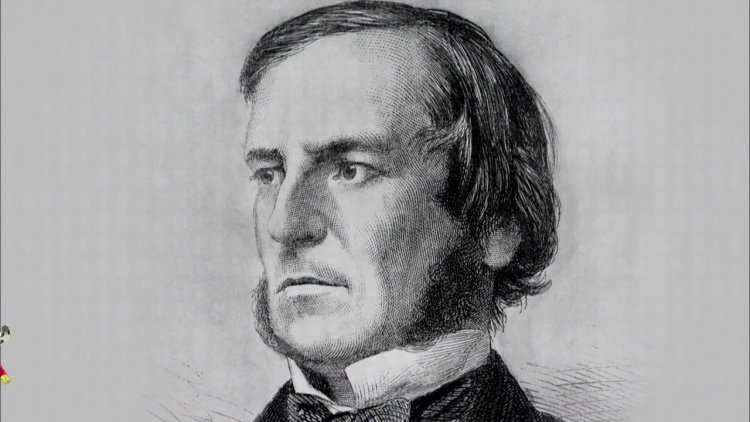Official:
George Boole. November 02, 1815 – December 08, 1864. British mathematician and logician, one of the founders of mathematical logic, Fellow of the Royal Society of London.
Life and Work:
1. Physicists, i.e., people dealing with sciences, recognize the son of a modest craftsman as a famous mathematician and a founder of mathematical logic. Physicists understand the terms of Boolean algebra and Boolean logic. It is the latter that established the foundations of the information age.
2. Those favoring humanities will primarily perceive the professor of mathematics at Queen’s College, Cork as a father of five daughters, four of whom were either engaged in science or were married to a mathematician or became a mother of a mathematician. The fifth daughter’s name was known to all reading community of the Soviet Union as it was Ethel Lilian, with the married name Voynich.
3. The website of the University College Cork (the present-day name of the institution where Boole taught) states that “Boole’s heritage is found everywhere: in storing and searching for the information, in electronic circuits and control facilities that sustain life, education and communication in the 21st century. His main achievements in mathematics, logic, and theory of probability lay the foundation of the present-day mathematics, microelectronics, and computer science.”
4. The man who made such a huge impact on our life was born in a shoemaker family in the town of Lincoln, England. Yet the father of the family was keen on sciences, so he taught his son the basics of mathematics.
5. The family could not pay for the education of the son, so George managed to complete only the primary school. He had to study by himself and by the age of 12 he had mastered Latin, then came Greek, French, German and Italian.
6. At the age of 16 Boole had to provide for his parents and three younger siblings. At that time, he was a school assistant, so he decided to master advanced mathematics: he read journals, the works by Newton, Laplace, and Lagrange.
7. At the age of 20 Boole established his own school in Lincoln. In the next 10 years he managed different schools thus earning his living, yet he never forgot about science.
8. George Boole was only 24 when he published his first article titled Researches in the Theory of Analytical Transformations in the Cambridge Mathematical Journal. It marked the beginning of the friendship between the mathematician and the editor of the journal. With time the friendship only grew and the journal published over 20 articles by Boole.
9. In 1847 Boole published a pamphlet titled Mathematical Analysis of Logic where he put forward the idea that logic was closer to mathematics rather than to philosophy. This work received public acclaim and the self-taught scientist got the position of professor at Queen’s College, Cork.
10. Other major works by Boole include The Calculus of Logic, An Investigation of the Laws of Thought on Which are Founded the Mathematical Theories of Logic and Probabilities, A Treatise on Differential Equations, and A Treatise on the Calculus of Finite Differences.
11. Apart from mathematics, Boole was interested in theology and philosophy. His collection of thoughts on these matters may be found in his four speeches delivered and published in different years: The Genius of Sir Isaac Newton, The Right Use of Leisure, The Claims of Science, and The Social Aspect of Intellectual Culture.
12. In late November 1864 Boole walked three miles from home to the university under the heavy rain, then he gave lectures in wet clothes. The walk in bad weather left its consequences: Boole fell ill with pneumonia. His wife believed that the medication should be similar to the cause of the disease and thus wrapped the scientist in wet blankets. The disease and the wrong treatment did their harm: the outstanding mathematician died before reaching 50 years of age.
13. The name of George Boole is commemorated in the logical type of data available in the overwhelming majority of programming languages: the Boolean type takes two possible values sometimes called “true” and “false.” In some programming languages “true” equals 1 and “false” equals 0.
14. George was married to Mary Everest who was a teacher. It is not in vain that her maiden family name coincides with the famous mountain – the summit was name after George Everest, famous cartographer and land surveyor, who was Mary’s uncle.
15. The life of Mary Everest-Boole is an inspiring example for feminists: she made a career against all odds. She was a self-taught mathematician, yet she wrote the work Philosophy and Fun of Algebra. Her ideas were rather advanced: for example, she suggested learning mathematics through games. She is also credited with inventing a curve line for this purpose. This invention generated the string art.
16. It is rumored that once George Boole once welcomed Count Castellamare and Carlo Poerio who had been sentenced to life-long exile from Italy. These stories impressed his daughter Ethel Lilian so much that later she wrote her famous Gadfly novel.






















